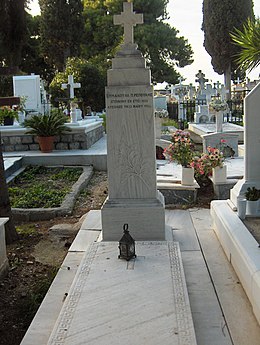누오리개
Nu Aurigae| 관측 데이터 에폭 J2000 이쿼녹스 J2000 | |
|---|---|
| 별자리 | 오리가 |
| 우측 상승 | 05h 51m 29.40040s[1] |
| 탈위임 | +39° 08′ 54.5428″[1] |
| 겉보기 크기 (V) | 3.957[2] |
| 특성. | |
| 스펙트럼형 | G9.5 III Fe1 Ba0.2 + wd[3] |
| U-B색지수 | +1.084[2] |
| B-V색지수 | +1.138[2] |
| R-I 색지수 | 0.56 |
| 아스트로메트리 | |
| 방사 속도 (Rv) | +9.92 ± 0.14km[4]/s |
| 고유 운동 (μ) | RA: +8.48마스[1]/yr Dec.: +0.39[1]mas/yr |
| 시차 (π) | 15.17 ± 0.88[1] 마스 |
| 거리 | 220 ± 10 리 (66 ± 4 pc) |
| 절대치수 (MV) | −0.27[5] |
| 세부 사항 | |
| 미사 | 2.12[6] M☉ |
| 반지름 | 19[4] R☉ |
| 루미도 | 135[4] L☉ |
| 표면 중력 (log g) | 2.4[4] cgs |
| 온도 | 4,571[4] K |
| 금속성 [Fe/H] | –0.14[4] 덱스 |
| 회전 속도 (v sin i) | 5.0km[4]/s |
| 나이 | 1.11[6] Gyr |
| 기타 지정 | |
| 데이터베이스 참조 | |
| 심바드 | 자료 |
igae 오리가에서 라틴어로 표기된 누오리가(Nu Aurgie)는 북쪽 별자리인 오리가(Auriga)에 있는 별의 바이엘(Bayer) 명칭이다.육안으로는 3.96의[2] 외관상으로 볼 수 있으며 지구에서 약 220광년(67파섹) 떨어져 있다.이것은 G9.5 III의 별 분류를 가진 진화된 거대한 별이다.[8]그것은 빨간 덩어리로 된 별인데, 이것은 중심부에 있는 헬륨의 융합을 통해 에너지를 발생시키고 있음을 나타낸다.[9]바깥쪽 봉투는 태양 반지름의 19배까지 확장되어 4,571K까지 냉각되어 G형 별의 특징적인 황후광을 발했다.[4]태양 광도의 135배로 빛난다.[4]
이것은 백색 왜성 동반자로 의심되는 천체 이항이다.[3]54.6아크초 떨어진 규모 10의 별은 광학 동반자다.
참조
- ^ a b c d e van Leeuwen, Floor (November 2007), "Validation of the new Hipparcos reduction", Astronomy and Astrophysics, 474 (2): 653–664, arXiv:0708.1752v1, Bibcode:2007A&A...474..653V, doi:10.1051/0004-6361:20078357, S2CID 18759600.참고: VizieR 카탈로그 I/311을 참조하십시오.
- ^ a b c d Oja, T. (August 1986), "UBV photometry of stars whose positions are accurately known. III", Astronomy and Astrophysics Supplement Series, 65 (2): 405–409, Bibcode:1986A&AS...65..405O.
- ^ a b Eggleton, P. P.; Tokovinin, A. A. (September 2008), "A catalogue of multiplicity among bright stellar systems", Monthly Notices of the Royal Astronomical Society, 389 (2): 869–879, arXiv:0806.2878, Bibcode:2008MNRAS.389..869E, doi:10.1111/j.1365-2966.2008.13596.x, S2CID 14878976.
- ^ a b c d e f g h i Massarotti, Alessandro; et al. (January 2008), "Rotational and Radial Velocities for a Sample of 761 HIPPARCOS Giants and the Role of Binarity", The Astronomical Journal, 135 (1): 209–231, Bibcode:2008AJ....135..209M, doi:10.1088/0004-6256/135/1/209.
- ^ Anderson, E.; Francis, Ch. (2012), "XHIP: An extended hipparcos compilation", Astronomy Letters, 38 (5): 331, arXiv:1108.4971, Bibcode:2012AstL...38..331A, doi:10.1134/S1063773712050015, S2CID 119257644.
- ^ a b Luck, R. Earle (2015), "Abundances in the Local Region. I. G and K Giants", Astronomical Journal, 150 (3), 88, arXiv:1507.01466, Bibcode:2015AJ....150...88L, doi:10.1088/0004-6256/150/3/88, S2CID 118505114.
- ^ "* 32 Aur". SIMBAD. Centre de données astronomiques de Strasbourg. Retrieved 2012-08-19.
- ^ Eggen, O. J. (1962), "Space-velocity vectors for 3483 stars with proper motion and radial velocity", Royal Observatory Bulletin, 51: 79, Bibcode:1962RGOB...51...79E.
- ^ Valentini, M.; Munari, U. (November 2010), "A spectroscopic survey of faint, high-Galactic-latitude red clump stars. I. The high resolution sample", Astronomy and Astrophysics, 522: A79, arXiv:1007.0207, Bibcode:2010A&A...522A..79V, doi:10.1051/0004-6361/201014870, S2CID 119156545.



